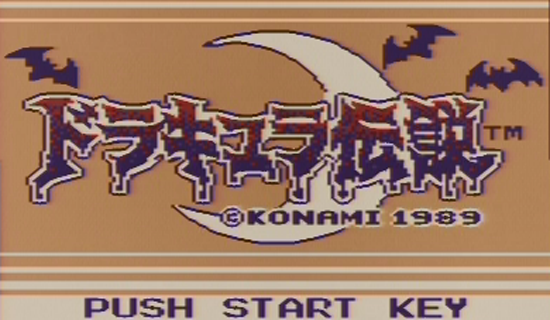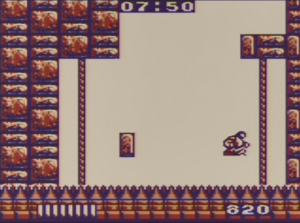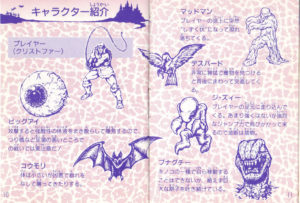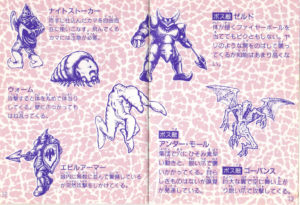Support from Konami of Nintendo’s handheld Game Boy console came quickly, and with titles from recognizable franchises early on. Castlevania was the first of such franchises, releasing right around six months after the platform itself. Being the first real mainstream portable system, the early days of the Game Boy were a bit of a wild west. A lot of the releases tended to not be optimized for portable game play in one way or another. Castlevania: The Adventure/Dracula Densetsu didn’t necessarily have that problem so much as it seemed to have been designed by people who didn’t really understand what qualities made the previous Castlevania games good. Or at the very least, their appetite for trying something new and different with the series was just a little too great.
First though, let’s take a look at the story. Here’s my translation of the summary featured in the manual:
In the small European country of Transylvania, there even now exists a legend of a single evil spirit. That is the legend of the evil lord Dracula, who struck fear into the hearts of men, and possessed incredible magical powers. Though Dracula has been resurrected countless times, he was defeated without sending the world into darkness. This was by Simon, the latest in the Belmont family line…
Simon and Dracula’s confrontations will be many. But Dracula existed in Transylvania before his first confrontation with Simon. But not as the evil lord Dracula, rather as an evil sorcerer…
Count Dracula was a formidable devil worshiper that had constructed a castle on the outskirts of Transylvania, where he held satanic rituals each night. Calling forth numerous demons from parallel universes as his minions, he was seeking to become an evil lord with eternal life and magical powers. And the townspeople become frightened of Count Dracula as he grew more powerful and evil by the day.
But there was a single man who rose up against him. He was a Belmont family ancestor, Christopher. Christopher hurries toward the dark castle, where many demons and traps await him. Will he be able to defeat Count Dracula, who has become an evil lord?
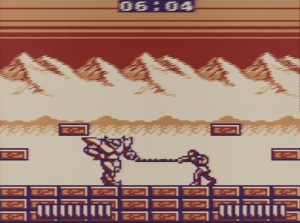
As we can see from the story, Castlevania: The Adventure goes back to act as a prequel to the first Castlevania game on the NES/FDS, and examine Dracula’s initial rise to power. Don’t get too excited though: While Dracula is initially presented as being a bit more human (though an extremely tall one) in the first phase of the boss fight, in the end it’s not a particularly memorable Dracula fight at all.
Though this is a typical Castlevania game in that you’re whipping various monsters and jumping, there are quite a few changes that were made. For starters, there are absolutely no sub-weapons to be found. Your whip has a few different levels that it can power-up, and you’re now able to shoot a fireball from your whip when it’s fully powered. You have to struggle to hold onto it though, since ANY enemy damage will knock you down to the previous level of power on your whip. That’s right, you don’t even need to die to lose that fireball! And since there are no sub-weapons, hearts restore your health instead. You’ll also find no stairs to ascend or descend this time around, but rather ropes! And boy if you didn’t like stairs, you’ll absolutely hate the incredibly slow speeds at which you climb up and down ropes! Particularly in some of the situations in which you have to do it, but more on that in a bit.
One new feature that this game brings about, is the ability to access one hidden room per each level that contains various power-ups and health replenishment items. You can get to these any number of weird ways, such as jumping across invisible platforms, climbing a rope right through a wall, etc. You really just have to know the locations, since they aren’t particularly obvious in any way. The bad design decisions began to pile up…
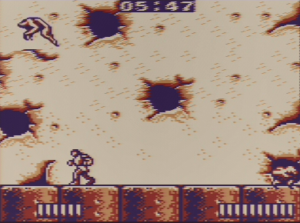
Castlevania games were never known as being the speediest action games, but Castlevania: The Adventure takes this to an extreme. Christopher is easily the slowest moving Belmont of the bunch, just positively crawling through the levels at a snail’s pace. You get used to it after playing for awhile, but it’s just agonizing at first! You could be forgiven for thinking that the game was experiencing slowdown! And to make matters worse, they’ve made the platforming almost as unbearable. It’s well known that jumping in Castlevania games requires some practice and a good sense of timing, but now it’s WAY more demanding and frequent! You’ll find yourself hopping from falling platform to platform with surprising frequency.
Remember when I mentioned the slow rope climbing earlier? Well the third level in this game features it heavily, and is the biggest bunch of bullshit that Castlevania has produced up to this point…and maybe even ever? The movement speed just does NOT support being able to do this at all, and it was a positively horrible idea to even put it in. I’m not naturally great at Castlevania games, but I’m always able to get through them by playing the difficult levels over and over, and just getting better little by little. I was able to clear even the most difficult levels in Castlevanias 1 and 3 quicker than the amount of time I spent just trying to get through this level, ultimately unsuccessfully. Adventure only has four levels in total, making it the shortest level-structured Castlevania game up to this point. Each level is quite a bit longer to make up for that, but I would have much rather had more levels that were less full of ridiculous challenges.
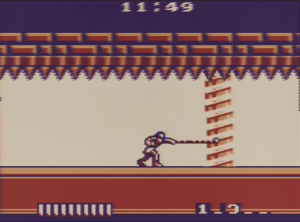
They seemed to understand that because the game moves slowly, that they couldn’t overwhelm the player with enemies though. Even to the extent that the first Castlevania game did (we’re not talking anything approaching Haunted Castle levels here). It might feel sparsely populated if you think about it outside of the context of the game speed. But whether it was intentional or not, it’s for the best that it turned out this way. The bosses are also all surprisingly manageable, even Dracula himself. He only has two phases, both of which can be figured out with fairly little trouble compared to Dracula from Castlevania 1. Though since that Dracula was the only real difficult version in the Castlevania series so far…maybe it wasn’t all that surprising?
Certainly not at all surprising is that the soundtrack is killer. Shigeru Fukutake, Norio Hanazawa, and Hidehiro Funachi are all credited as Sound Creators for the game. And like most older games with multiple composers, there’s no real breakout of who composed what tracks. The music itself is actually in stereo, and the bass line in particular can be heard moving around between the left and right channels. So listening to this on a stereo setup, or at least through headphones, is highly recommended. These tracks appeared on the CD “Akumajou Dracula Best 2”, which features some interesting liner notes. According to Norio Hanazawa, this was the first project he had a leading role in at Konami, so he has a lot of emotional attachment to this soundtrack. He mixed a bit of soul music into the tracks, which is a particular favorite genre of his. He also mentioned that it has more of a pop music finish on it than previous Castlevania games, though he felt it still continues on with the Castlevania tradition of making great use of originality in the compositions. Many of the tracks are also pretty amusingly named: Battle of the Holly (obviously this was meant to be “Holy”), Death Fair (my favorite song of the soundtrack, even though it’s from the worst level), Kill! Kill! Kill!, Gate to Hell, Evil Devil, etc. I love that they continued to lean into the ridiculous song titles.
Having come after 1998’s arcade version of Castlevania, Haunted Castle, the franchise was having its first rough patch. It would do a great job of pulling out its rut in just a couple of months, but I think Adventure is the worst entry in the series so far. Haunted Castle was by no means a good Castlevania game, but at least they didn’t lean into a mechanic that just didn’t fundamentally work with the way the game was designed, and they didn’t try to take away one of the most intriguing parts of the series. Thankfully lessons would be learned for future portable Castlevanias.
Castlevania: The Adventure also featured on a late released Game Boy collection of Konami titles entitled Konami GB Collection Vol. 1, in 1997. The European version was released in 1999 for the Game Boy Color, so if you play that version you no longer need a Super Game Boy to play this title in color. The original Game Boy version was also released on the Nintendo 3DS Virtual Console. It was also completely remade as a download-only title for the Wii in 2009, entitled Dracula Densetsu ReBirth/Castlevania: The Adventure ReBirth.
